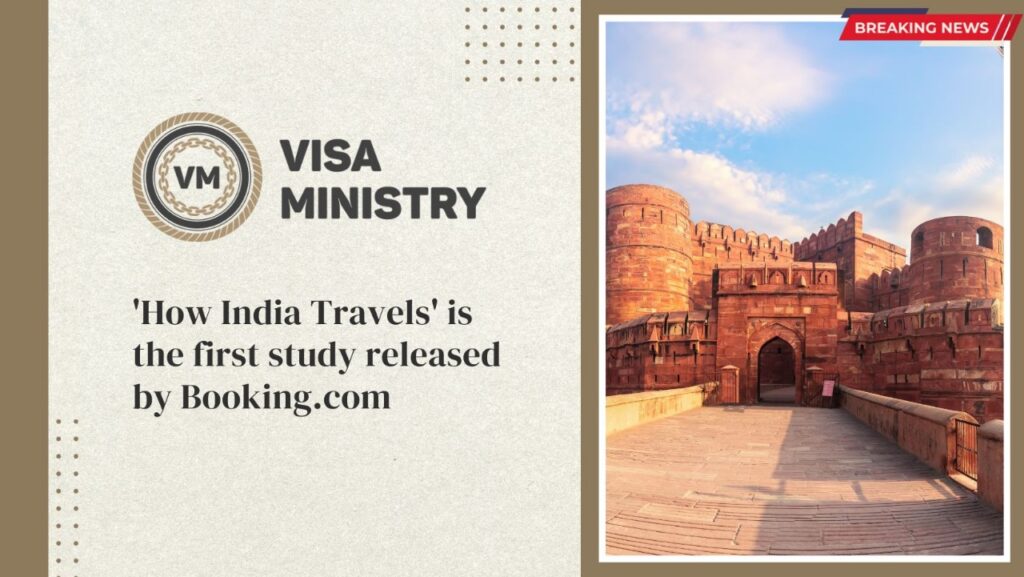The inaugural ‘How India Travels’ report was published by Booking.com. The report, with McKinsey & Company as the knowledge partner, offers priceless insight into the changing travel preferences of Indians and the variables behind this increase. Indian travelers are back in the game, eager to put the pandemic’s lockdown days behind them and travel more than ever for both business and pleasure. They are looking for newer, unusual locations and authentic, immersive experiences. Often influenced by social media, where they obtain new ideas and plan their journeys, they have become more picky and experimental in what they want from a trip.
The 2020s: An Era Belonging to Indian Travelers, Prepared to Explore Once More
Prior to COVID-19, travel expenditures in India were USD 150 billion, placing the country as the sixth-largest spender globally. It is predicted that by 2030, total travel expenditure by Indians will soar to an impressive USD 410 billion, making India the fourth largest global spender and registering the fastest COVID recovery globally across key regions. This will be made possible by India’s strong economy, expanding middle class, and travel-loving youth. Travel restrictions that were in place for a long time, particularly in China, Japan, and South-East Asia, kept tourists away from Asia through 2022. By reaching 78% of 2019 levels in 2022, India took the lead in the recovery of tourism expenditures, compared to 52% for Asia. From 2.3 billion journeys in 2019 to a mind-boggling 5 billion trips in 2030, more trips overall are anticipated.
Indian Travel Planning: Unleashing Spontaneity and Unusualness
The study indicates an unexpected characteristic of Indian tourists: with an average window of only 29 days, Indian tourists exhibit extraordinary spontaneity in their trip planning, followed by Japanese tourists (57 days) and Americans (63 days). Indian travelers love the thrill of making swift, adventurous travel arrangements.
The importance of food is paramount while choosing a place to stay: Indian tourists adopt a very unusual strategy. Food convenience was emphasized by travelers, with more than 80% of them valuing restaurant and room service alternatives while away.
Alternative lodging choices like hostels, campgrounds, rental homes, and chalets are in high demand. Average Daily Rates (ADR) growth for these nontraditional lodging options surpassed that of traditional hotels and managed chains, pointing to a paradigm shift in travelers’ priorities.
In 2023, three nights at villas and 14 nights at guesthouses were reserved for each night at a camp.
In popular tourist and business destinations like Varanasi, Goa, Bangalore, and Delhi, the growth in weekend reservations for alternative lodging is 4 to 5 times larger in 2023 than in 2022.
Where are Indians Going on Vacation? – An Increase in Locations While Accepting Both India and the World
Tier 2-3 locations like Varanasi, Coimbatore, and Kochi are becoming more well-liked while metropolises continue to be the most popular travel destinations.
According to data from Booking.com, a new trend is beginning where less well-known treasures are suddenly capturing the wanderlust of tourists looking for a more genuine and unique experience. Bookings for destinations like Varanasi, Gurugram, and Coimbatore are rising dramatically.
Hilly destinations like Manali, Shimla, and Lonavala continue to be popular, but unusual places like Panchgani, Madikeri, and Mt. Abu are expected to see the highest surge in demand in 2023. The increase in demand for these outlandish locations reflects a desire to go beyond the usual.
With new holiday spots from Vietnam, Indonesia, and Nepal topping the list, Indians are increasingly exploring outside of their country for their next getaway. This is made possible by improved air connectivity, more awareness, simpler booking processes, and simplified visa requirements.
What Encourages Indian Travelers to Explore: Film, Mega Events, and Social Media
According to the study, TV shows and Indian movies influence the interests of Indian tourists, with more than half (54%) saying they would choose a destination featured in a show or movie. Only 2% of travelers say there is no impact. This shows how celebrity endorsements and relationships with brands are becoming more and more relevant and influential for travel destinations.
Mega-events, such as athletic competitions (ICC Men’s Cricket World Cup 2023), political gatherings (G20 Summit 2023), music festivals (Lollapalooza), and many others, have a magnetic pull on travelers and serve as compelling catalysts for their journeys.
It is clear that social media has a significant impact on how people travel. In 2022, 91% of Indian travelers said that YouTube is their preferred social media site for travel inspiration, with 85% of Indian travelers showing an interest in Instagram.
Rapidly Increasing Travel Ecosystem – Industry’s Approach to Providing Travelers with Power
More than ever, Indian travelers desire to travel quickly and easily while seeking out unusual locations and alternative lodging. To suit the demands of the discriminating Indian traveler, the travel ecosystem is quickly adapting.
For Indian tourists, destinations are creating a variety of services that cater to a range of preferences and budgets. In order to suit all types of travelers, Dubai, for example, is the pinnacle of this trend post-COVID, providing a wide range of lodging, dining, and experience alternatives for any price.
The presence of major international hotel chains is growing even more in Tier 2 and Tier 3 cities like Jodhpur, Dharamshala, Bodhgaya, Bilaspur, and Coorg. Additionally, Tier 2 and Tier 3 cities like Kolhapur, Nashik, and Puri are home to 70% of the planned branded hotel properties.
Branded inventory share increased in these markets from about 30% in 2015–2016 to roughly 50% in 2022–2023 due to the increasing growth potential.
The road forward: Creating a Travel Industry that Blazes New Trails
The travel business is experiencing fascinating times right now. Understanding Indian travelers will enable the country’s travel ecosystem to develop in concert with new wants and tastes, resulting in a thriving tourist industry in the coming years.
“We are thrilled to launch the first edition of our ‘How India Travels’ Report with our knowledge partners McKinsey & Company, to better understand the ever-changing behaviors and preferences of Indian travelers,” said Santosh Kumar, Country Manager for Booking.com in India, Sri Lanka, the Maldives, and Indonesia. The Indian traveler is enthusiastic, willing, and self-assured to keep moving, exploring new places and new experiences. It is also good to observe that the global recovery is being driven by Indian tourists, who are predicted to spend USD 40 billion by 2023.
This is a special chance for India’s tourism industry to provide appealing, individualized, and more sustainable experiences to Indian travelers where they are. The best is yet to come, and Booking.com will keep making it easier for everyone to visit the world as we set out on this voyage of exploration and adventure together, with the aid and support of our lodging partners and the travel industry.
Source- Travel daily
Link- https://www.traveldailymedia.com/booking-com-launches-inaugural-report-on-how-india-travels/

